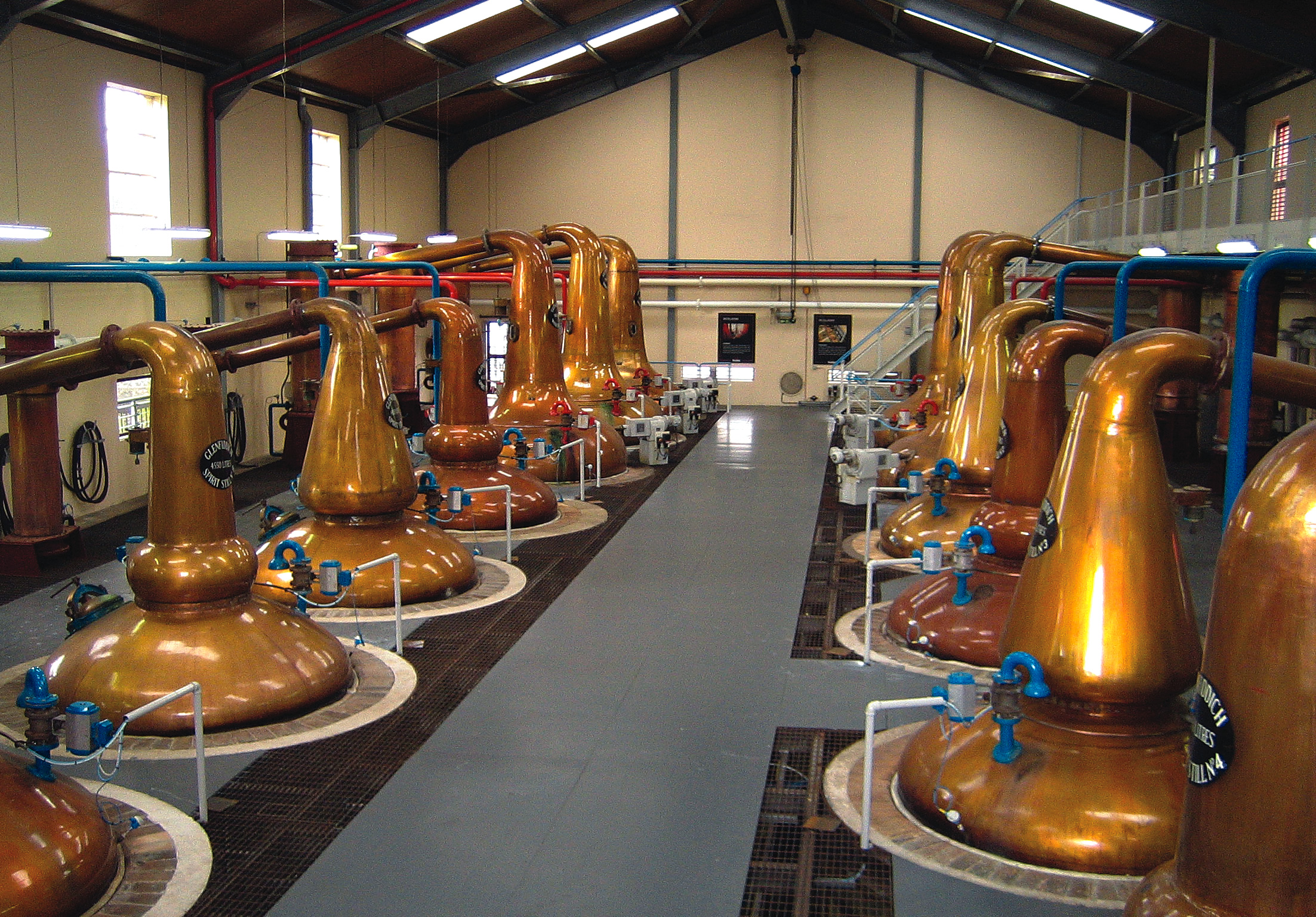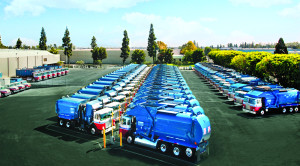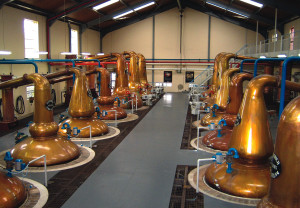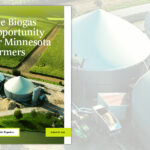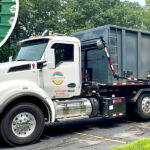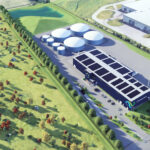BioCycle March/April 2014
Perris, California: Sanitary District Commits Organics To New Digester
The Costa Mesa (CA) Sanitary District awarded a contract to divert food and green waste to CR&R Inc.’s new anaerobic digester currently under construction in Perris. Residents will be given an organics cart for curbside setout. Trash and organics collection will take place on the same day. “The contract award is seen by CR&R as an important step for the development of AD in California, and a big step toward a zero waste future,” says Paul Relis of CR&R, and a member of the Board of the American Biogas Council. “Design and engineering of our AD project is in full swing.” The facility is permitted to process over 80,000 tons/year of organic waste (primarily food and green waste) in phase one, and is expandable to process over 300,000 tons/year in three additional phases. CR&R is integrating the new plant into existing operations at its Perris materials recovery facility.
CR&R selected the Eisenmann horizontal plug flow anaerobic digestion system for its facility. The plant features four parallel primary digesters. Following preprocessing, each digester vessel is automatically loaded via conveyors and dosing bins. The digesters are equipped with a slow moving horizontal agitator to ensure proper mixing of the feedstock. Biogas will be upgraded in a Greenlane conditioning unit, and then compressed for use as fuel in CR&R’s fleet of collection vehicles. Excess renewable CNG will feed into a natural gas pipeline distribution system. Digestate will be utilized as a soil amendment.
Little Rock, Arkansas: Magic Dirt From Digested Manure
An alternative to peat was introduced recently by Cenergy USA, and is being distributed to retailers in the Pacific Northwest for the 2014 growing season. Magic Dirt™ is made primarily from nutrient-rich digested manure and farm wastes. The product has been certified as 100% BioBased by the USDA’s Biopreferred Program and approved for organic production by the Idaho Department of Agriculture. The manure is processed in a DVO, Inc. two-stage mixed plug flow digester at Cenergy USA’s facilities in the Northwest. “Every cubic yard of Magic Dirt is the by-product of generating more than 100 kWh of renewable energy and removing greenhouse gases from the environment,” notes Bob Joblin, a partner in Cenergy USA. “It has pH within the 6-7 range and a guaranteed analysis of 1.15% Total N, 0.30% available phosphate and 0.35% soluble potash.”
Wellesley, Massachusetts: Projected Global Markets For AD Equipment
In February 2014, BCC Research, a market research firm based in Wellesley, Massachusetts, released Waste-Derived Biogas: Global Markets for Anaerobic Digestion Equipment, a technical report that details projections of the global markets for anaerobic digestion equipment from the years 2000 to 2018. The report considers markets for biogas derived from four different feedstock sources: municipal and domestic sewage; industrial wastewater; landfill gas; and agricultural wastes, which includes animal manures, crop residues and energy crops, in the case when they are codigested with other organic agricultural materials. Biogas end uses covered in the report are: municipal power generation; on-site heat and power production; and transportation applications.
Global markets are broken up into regions (i.e. North America, Europe, Asia, etc.). Details are provided on countries most active in the industry and include present market status, biogas production potential, and government regulations and incentives for the biogas industry. The market figures that researchers used for their projections are based on estimated sales revenues for the major players in the biogas industry in a particular year. These figures are projected in 2013 constant dollars, removing the inflation factor. Additional information in the report includes: technology overview, scope of the structure of the industry, and profiles of companies that play a key role in the industry.
The report projects the market for anaerobic digesters and landfill gas equipment to increase to $7 billion in 2018 (up from $4.5 billion in 2013), and an annual growth rate of 9.4 percent from 2013 to 2018.
Dufftown, Scotland: Digesting Pot Ale And Spent Barley
In February 2014, the Moray Council in northern Scotland unanimously approved plans to build a 3.5-megawatt anaerobic digestion plant at the Glenfiddich Distillery in Dufftown. The facility will use spent malt barley from the distilling process and “pot ale,” a high-protein liquor residue from the stills, which will be pumped from the main distillery to the new 4-acre site. Plans for the new plant include two 5,000 cubic meter (m3) reactor tanks; two 6,000 m3 storage tanks; an 800 m3 buffer tank; an 800 m3 liquid feed tank; a 46-ft high desulfurization tower; a sulfur gas burner; combined heat and power units; a biogas upgrading tower; and reception, delivery and storage facilities.
The anaerobic digester is expected to provide heat and steam for use in distillery processes on site. Biogas will either be cleaned and injected into the national gas network or processed to generate electricity for the national grid. In the “Planning Consent” document, the Scottish Environmental Protection Agency noted that Glenfiddich intends to treat all remaining residues from the AD plant so they meet PAS 110 standards for use as biofertilizer or biofeed.
According to the Scotch Whiskey Association (SWA), the industry has been investing significantly in renewable energy technologies and other sustainable measures. For example, the SWA’s “Environmental Strategy Report 2013,” published in December, notes that the Dailuaine Distillery, owned by Diageo, invested $9.9 million in a new AD plant to treat distillation residues. The biogas is sent through a combined heat and power (CHP) engine to generate 0.5 MW of electricity (meeting 40% of the plant’s load) and steam to power the onsite distillery. “At a time when the industry is growing its distillation capacity in Scotland, green investments are at the heart of companies’ commitments,” says Julie Hesketh-Laird of SWA.”


